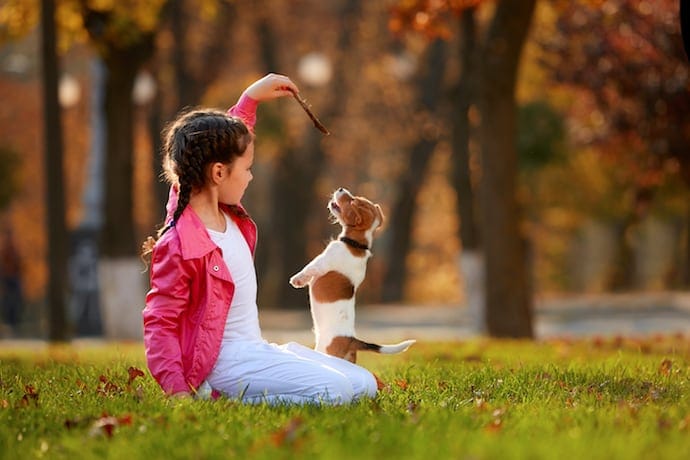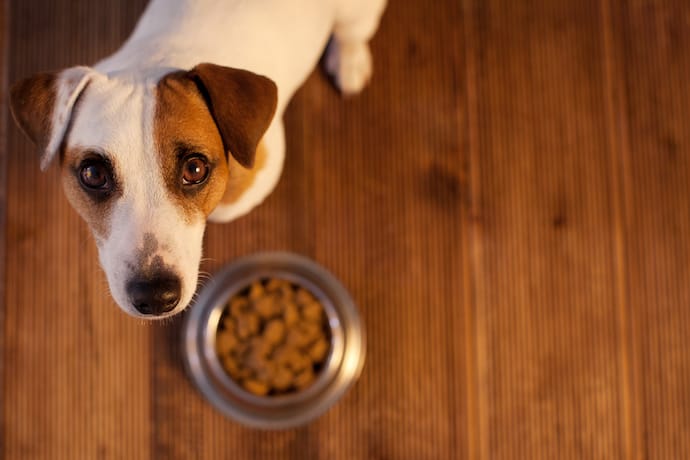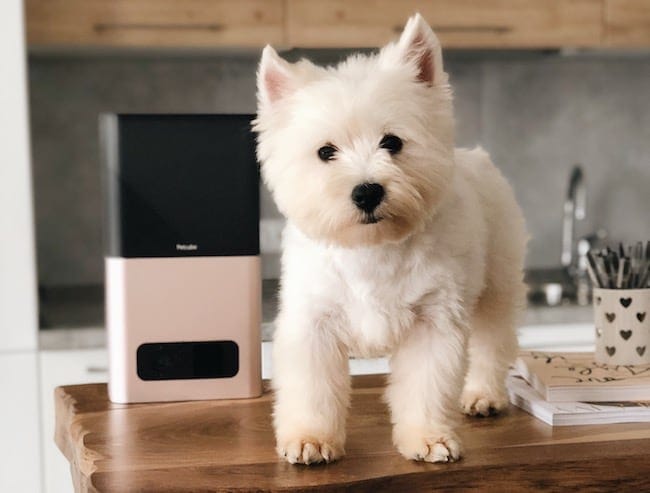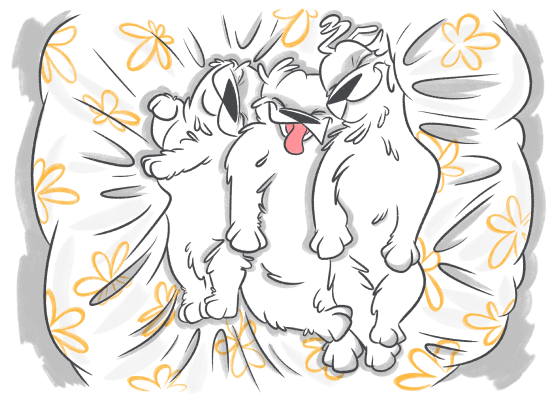Welcome to the fellowship of dog owners! Life with a new puppy will never be the same again, in a good way! Raising a puppy is rewarding, yet at times frustrating. But with this puppy 101 guide you learn how to care for a puppy and get off to a great start.
Stop Googling - Ask a Real Vet
Find Your Ideal Puppy
Is there anything as cute as a puppy? (OK, kittens maybe...) Make sure to keep that new puppy cuteness in check, since it can override good sense and long-term training success. Brace yourself and don’t to let your heart rule your head.
How to Choose a Puppy
Consider which breed is best suited to your lifestyle. Factors include your working hours, family circumstances, and your energy levels.
Think about:
- Can a giant breed squeeze into your small apartment?
- Will a puppy barking disturb the neighbors?
Be honest and draw up a list of your dog’s ideal characteristics.
Read more: 10 Best Dogs for First-Time Owners
Dog Adoption
Sourcing your dream dog takes time and research. Your options include using a breeder, buying privately, or adopting from a shelter.
A responsible breeder screens the health of the parent dog, raises the litter at home, and socializes the puppies at a young age.
Alternatively, shelters promote “Adopt don’t shop.”
Giving a puppy from a rescue a new home may save the life of that dog, and free up a pen for another needy four-legger.
First Things First
You’ve found a pup and fallen in love. Prepare for the puppy’s arrival beforehand so you can concentrate on having fun together after they move in.
1. Puppy Proof the Home
To a puppy, your home is an adventure playground. Protect the new puppy and save your belongings by puppy-proofing your pad.
Stow away all chewable objects that can be swallowed. Make electrical cabling safe behind furniture or cover the cables. Block access to rooms where puppy pee or poop can cause damage.
When you think the job’s done, get down to the floor level yourself. Check from a puppy’s eye view under the sofa and in all of the places you don’t usually see. This might sound a bit silly, but it’s a great way to make sure you didn’t miss anything.
2. Register with a Vet
Ask around to find a local vet you feel comfortable with. Seek a vet with a good reputation that likes animals and has modern facilities.
A good clinic will talk you through a puppy shots schedule, deworming, parasite control, and desexing. It’s a good test of how helpful they are and whether you can trust your pup into their care. Another great add-on to a vet clinic is a 24/7 Online Vet — an 'always there' team of licensed veterinarians ready to answer newbie questions.
Also check the location of the nearest emergency clinic so you know where it is in case you need it. It’s a good idea to have an emergency fund to cover unexpected veterinary expenses. When you are facing a pup emergency, the last thing you want to worry about is money.
Read more: What To Expect From An Online Vet Visit
3. New Puppy Supplies
Like a new baby, a new puppy comes with a shopping list. Instead of a crib, you need a crate and/or things such as a dog bed (or two), food and water bowls, and a collar and a leash.
Things you need for a puppy include:
- Dog bed: Get two, one to use and one as a fill-in when the first needs to get washed;
- Bowls: Stainless steel or ceramic, food, and water bowls;
- Toys: Choose items the puppy can’t swallow;
- Cleaning supplies: Disposable paper, disinfectant, and household gloves;
- Crate: To help with potty training;
- Treats: A vital part of training;
- Food: Puppy food right for your dog’s size and age;
- Collar and leash: Get the puppy used to these early;
- Brush and comb: Start grooming so the puppy accepts it.
4. Learn about Puppy Care
You need to understand how a puppy things and learns to truly be caring for a puppy. Seek out reputable sources to read up on raising a puppy, such as the ASPCA, or local animal hospitals. The more you know, the happier your pup will be.
Puppy Training

Good doggy manners don’t come naturally. You must teach your new pup how to behave. Use reward-based training methods. The idea is to give your puppy a treat when they behave well, so they repeat that behavior.
Crate Training a Puppy
A crate, like a den, is a safe place for your new puppy. Choose a crate just big enough for the puppy to lie down with their legs outstretched. If you choose one bigger than this, they may toilet in a corner. Place a welcoming bed and a blanket inside, if possible that smells like the dog’s mother.
Read more: Crate Training a Dog or Puppy While at Work
Never shut a puppy in a crate against their will. Instead, make it a happy place by hiding treats inside. When your puppy sniffs out the goodies, praise them. Feed your puppy inside the crate, so they link it to good things.
Once the puppy is happy to go inside, close the door. Praise the puppy for being calm and open the door again. Slowly extend how long the door is shut and heap praise on the puppy’s head.
If your puppy cries, don’t let them out of the puppy crate as this rewards their noise. Instead, only open the door when they’re quiet, showing them that calmness is good.
Never use a puppy crate to punish your dog or leave your puppy inside for longer than four hours at a stretch.
Potty Training a Puppy
It’s important your puppy learns the right place to go to the toilet.
To do this you:
- Prevent indoor accidents;
- Offer lots of toilet breaks;
- Praise your puppy when they go in the correct place.
Watch your puppy like a hawk and limit their chances to pee indoors. If your puppy squats, whisk them straight outside. When you can’t watch your puppy, pop them in the crate.
Offer your puppy a toilet break:
- Every 20-30 minutes;
- During walks;
- 15 minutes after a meal;
- Before playing;
- At bedtime.
When your puppy squats on the toilet spot, repeat the cue word “toilet” and give your puppy a treat. Repeat this each time your puppy toilets. They’ll quickly link peeing in the right place to getting a reward. Simple!
Read more: How to Potty Train a Puppy: Your Guide to Success
How to Stop a Puppy from Barking
In an apartment, a puppy barking will disturb your neighbors and make you unpopular. Avoid this by teaching your puppy good habits from the start.
Be careful never to reward your puppy for barking. Unfortunately, shouting at your puppy to be quiet, does this. When your puppy tries those first, exploratory barks, ignore them. If they learn barking isn’t rewarded, it becomes less attractive.
Some breeds are born barkers. Know this and wait for a gap in the barking to distract the dog with a squeaky toy. Then call the dog over and train them to pick up the toy. With a toy in their mouth, they’re less likely to bark. Now, reward them for carrying the toy. Pretty soon, your puppy will learn to pick up a toy instead of woofing.
Read more: Dog Breeds That Do and Don't Bark
Not Chewing Your Stuff
Puppies need to chew. The trick is to get them to chew their stuff, not yours.
Puppy proofing is very important, so your puppy doesn’t get their teeth into your shoes, books, or clothes. Next, you’ll need to provide an outlet for your puppy’s need to chew. Give your puppy chew toys or make your own.
Bored puppies are great chewers, so prevent boredom with exercise and play.
Read more: How to Stop Your Puppy from Chewing?
Basic Commands
A puppy needs to learn basic commands such as “Sit”, “Stay”, “Come”, and “Look”.
Sit
Teach “sit” using a treat as a lure. Hold the treat in front of your puppy’s nose. Raise the treat in an arc over the puppy’s head. As they follow the treat, their butt sinks to the floor. As this happens, say “sit” and reward the puppy.
Repeat this often. The puppy will learn what “sit” means and may even do it on their own in anticipation of a reward.
Stay
When teaching “stay”, have the dog sit, then wait a few seconds before giving the reward. Stretch out the time your puppy waits to get a treat.
Label this pause with the cue word “stay”. Once the puppy is able to sit still for one minute, take one step away then return to the puppy’s side.
Add to the distance between you and your pet, gradually stepping further and further away, while your dog stays put.
Come
Teach a young puppy to “come” by running away from them! This triggers their natural instinct to stick with their loved ones, like their mother.
As your puppy runs to catch up, say “come” in an excited voice. Praise your puppy and give a treat when they get to you.
Look
Get your puppy’s attention with a treat. Move the treat in a straight line from the puppy’s eyeline up to the bridge of your nose. As your puppy watches the treat say “look”.
Count to ten, praise your puppy and give them the treat. Extend the time your puppy stares before giving them the reward.
Read more: Dog Training Supplies: Behavior, Agility, and Intelligence Training
Walking on Leash
Start leash training when you have plenty of time!
Walk forward with your puppy on a leash.
When your puppy runs ahead, change direction and call to your puppy to come. Walk forward, only for as long as the leash stays slack. As soon as puppy pulls, change direction and call to them.
This teaches the puppy that pulling halts progress and gets them nowhere fast. They’ll learn it is quicker to get to an exciting place such as the park, by walking to heel.
Read more: Leash Training a Puppy 101: Step-by-Step Guide
Puppy Feeding

What to feed and how much should a puppy eat can be confusing.
What to Feed
Always offer puppy food (rather than adult or senior) to a growing pup.
The choice of puppy food wet or dry is a personal preference, as both are balanced diets.
Read the label and choose a food that lists named meats as the first four ingredients. Use the feeding guide on the pack as a starting point for the amount to feed.
Read more: Dog Not Eating: Reasons For Loss Of Appetite
Next, you’re probably asking yourself how often to feed a puppy. As a rule, divide the daily food allowance into four portions spaced out over the day. Once the puppy reaches three months of age, cut them down to three meals per day. At six months, go to twice daily feeding.
Caring for a Puppy By Breed

Each breed has different exercise, sleep, feeding, and coat care requirements. Read up on your particular breed to know how to best raise them.
The main factor is often their size. For example, large breed dogs need special puppy food for healthy bones and joints. Toy breeds need watching for signs of low blood sugar (such as shaking or drowsiness).
The larger the breed, the slower their skeleton matures. So avoid over-exerting a giant breed until they are around 18 months. In contrast, the guidelines are 6-12 months for a toy or small breed dog.
It’s wise to get a long-coated breed used to brushing from an early age. Otherwise, their coat may become tangled and unkempt.
Read more: Everything You Need to Know About Dog Grooming
Introducing your Puppy to Other Pets

Introduce a new puppy to existing pets by keeping the puppy under control. Do not ever let your puppy chase other pets.
How to Introduce Two Dogs
Have your puppy and dog meet on neutral ground. Praise the adult dog when they react calmly. Make sure both dogs have separate beds, bowls, and toys; and don’t leave the two unsupervised.
Dog and Cat Friends
Pop your puppy in their crate and let the cat sniff around them. Then, when both the cat and puppy are free, keep the pup under control on a collar and leash. Praise your puppy when they ignore the cat. If your dog tries to chase the cat, have them sit and distract them with the “look” command.
Never leave a cat and puppy alone unsupervised.
How to Introduce Dogs to a Small Mammal
It’s best to assume your puppy will give chase, so keep the two separate. Work on your “sit”, “come”, and “look” commands so you can control your puppy should they show interest in other pets such as small mammals.
Common New Owner Puppy Mistakes
When an owner doesn’t apply rules consistently it can confuse a puppy. For example, if you decide your puppy isn’t allowed on the sofa, apply this rule all the time. If your pup is allowed to come up for cuddles on the weekend, it will confuse them.
A common potty training mistake is to leave your puppy unattended outdoors. They’re more likely to play than concentrate on the job at hand. Focus your puppy’s mind and praise them for peeing in the right place, strengthening the training.
Sometimes, a common mistake for pet parents is to neglect their pets' safety. Petcube’s Emergency Fund, a pet insurance alternative, is a great way to get your back covered when incidents happen. All in all, it's a pet insurance alternative, which will cover vet costs if any emergency occurs.
Raising a Puppy While Working
A puppy needs regular toilet breaks and play. Leaving a puppy for more than four hours at a time isn’t fair. If necessary, ask a friend or dog walker to come by to give your puppy a play and toilet break.
To give your puppy more freedom when you’re at work, consider using a pen. Put your pup’s bed in one corner and puppy pads in another. Then your puppy can relieve themselves in the toilet corner and not soil their bed.
Read more: How to Choose a Dog Walker When Working Full-Time
Monitor Your Puppy 24/7 with Petcube

Petcube pet camera is a great way to check on your puppy when you can’t be there. From seeing your puppy sleeping, speaking to them, playing laser pointer games or giving treats remotely, Petcube is your eyes and ears when you can’t be there.
FAQ
How long does it take to potty train a puppy?
If you start at 8 weeks, many pups pick up potty training by 12-16 weeks. But remember some pups learn faster than others.
At what age can I start training a puppy?
Start with simple commands from 8 weeks old, but as a game. At around 12 weeks, your pup’s concentration will be better.
Should I Vaccinate My Puppy?
Yes. Vaccinations are an important protection against deadly diseases. Vaccinations start from around 6 weeks, with repeated doses every 3-4 weeks until 16 weeks of age.
Is Worming Important?
Yes. Most puppies are born with worms that can theoretically cause illness in human children. Regular deworming is essential as is protection against other parasites such as heartworm.
How Long Can a Puppy Be Left Alone?
Around four hours is considered the longest.
Was this article helpful?
Help us make our articles even better









